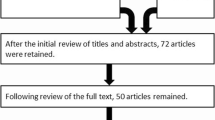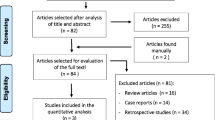Abstract
Purpose of Review
There is increasing interest in the long-term health and comorbid conditions associated with endometriosis for both women and neonates. The purpose of this review was to synthesize and discuss the current state of the literature investigating endometriosis and risk of adverse pregnancy outcomes.
Recent Findings
Methodologic considerations for studying endometriosis and adverse pregnancy outcomes include complexities regarding the comparison population, endometriosis definition, sample size, residual confounding, and interactions. The current research on endometriosis and adverse pregnancy outcomes should be interpreted cautiously. To date, evidence suggests that endometriosis may be associated with higher risk of ectopic pregnancy, placenta previa, preterm birth, and cesarean section. While an association with miscarriage and stillbirth has been consistently observed, the relative risk was small.
Summary
Pregnant women with endometriosis may be at higher risk for certain adverse pregnancy outcomes and may therefore benefit from additional monitoring. However, additional research is needed to confirm these associations and should focus on ensuring studies have internal and external validity, as well as, investigate the potential for differences in endometriosis phenotypes. Moreover, future research should focus on understanding potential mechanisms of association and better understanding how early interventions, through increased monitoring or screening during pregnancy, may improve outcomes.

Similar content being viewed by others
References
Papers of particular interest, published recently, have been highlighted as: • Of importance •• Of major importance
Giudice LC, Kao LC. Endometriosis. Lancet. 2004;364(9447):1789–99. https://doi.org/10.1016/S0140-6736(04)17403-5.
Zondervan KT, Becker CM, Koga K, Missmer SA, Taylor RN, Vigano P. Endometriosis. Nat Rev Dis Prim. 2018;4(1):9. https://doi.org/10.1038/s41572-018-0008-5.
Shafrir AL, Farland LV, Shah DK, Harris HR, Kvaskoff M, Zondervan K, et al. Risk for and consequences of endometriosis: a critical epidemiologic review. Best Pract Res Clin Endocrinol Metab. 2018. https://doi.org/10.1016/j.bpobgyn.2018.06.001.
Nnoaham KE, Hummelshoj L, Webster P, d'Hooghe T, de Cicco NF, de Cicco NC, et al. Impact of endometriosis on quality of life and work productivity: a multicenter study across ten countries. Fertil Steril. 2011;96(2):366–73 e8. https://doi.org/10.1016/j.fertnstert.2011.05.090.
Prescott J, Farland LV, Tobias DK, Gaskins AJ, Spiegelman D, Chavarro JE, et al. A prospective cohort study of endometriosis and subsequent risk of infertility. Hum Reprod. 2016. https://doi.org/10.1093/humrep/dew085.
Hwang SS, Dukhovny D, Gopal D, Cabral H, Missmer S, Diop H, et al. Health of infants after ART-treated, subfertile, and fertile deliveries. Pediatrics. 2018;142(2). https://doi.org/10.1542/peds.2017-4069.
Stern JE, Liu CL, Cabral HJ, Richards EG, Coddington CC, Hwang S, et al. Birth outcomes of singleton vaginal deliveries to ART-treated, subfertile, and fertile primiparous women. J Assist Reprod Genet. 2018;35(9):1585–93. https://doi.org/10.1007/s10815-018-1238-x.
Luke B, Stern JE, Hornstein MD, Kotelchuck M, Diop H, Cabral H, et al. Is the wrong question being asked in infertility research? J Assist Reprod Genet. 2016;33(1):3–8. https://doi.org/10.1007/s10815-015-0610-3.
Hoover KW, Tao G, Kent CK. Trends in the diagnosis and treatment of ectopic pregnancy in the United States. Obstet Gynecol. 2010;115(3):495–502. https://doi.org/10.1097/AOG.0b013e3181d0c328.
Leucht S, Kissling W, Davis JM. How to read and understand and use systematic reviews and meta-analyses. Acta Psychiatr Scand. 2009;119(6):443–50. https://doi.org/10.1111/j.1600-0447.2009.01388.x.
Giudice LC. Clinical practice. Endometriosis. N Engl J Med. 2010;362(25):2389–98. https://doi.org/10.1056/NEJMcp1000274.
Farland LV, Horne AW. Disparity in endometriosis diagnoses between racial/ethnic groups. BJOG. 2019;126(9):1115–6. https://doi.org/10.1111/1471-0528.15805.
Bougie O, Yap MI, Sikora L, Flaxman T, Singh S. Influence of race/ethnicity on prevalence and presentation of endometriosis: a systematic review and meta-analysis. BJOG. 2019;126(9):1104–15. https://doi.org/10.1111/1471-0528.15692.
Stephen EH, Chandra A. Updated projections of infertility in the United States: 1995-2025. Fertil Steril. 1998;70(1):30–4.
Farland LV, Collier AR, Correia KF, Grodstein F, Chavarro JE, Rich-Edwards J, et al. Who receives a medical evaluation for infertility in the United States? Fertil Steril. 2016;105(5):1274–80. https://doi.org/10.1016/j.fertnstert.2015.12.132.
Chandra A, Stephen EH. Infertility service use among U.S. women: 1995 and 2002. Fertil Steril. 2010;93(3):725–36. https://doi.org/10.1016/j.fertnstert.2008.10.049.
Stern JE, Luke B, Tobias M, Gopal D, Hornstein MD, Diop H. Adverse pregnancy and birth outcomes associated with underlying diagnosis with and without assisted reproductive technology treatment. Fertil Steril. 2015;103(6):1438–45. https://doi.org/10.1016/j.fertnstert.2015.02.027.
Missmer SA. Why so null? Methodologic necessities to advance endometriosis discovery. Paediatr Perinat Epidemiol. 2019;33(1):26–7. https://doi.org/10.1111/ppe.12540.
VanderWeele TJ, Ding P. Sensitivity analysis in observational research: introducing the E-value. Ann Intern Med. 2017;167(4):268–74. https://doi.org/10.7326/m16-2607.
Kvaskoff M, Mu F, Terry KL, Harris HR, Poole EM, Farland L, et al. Endometriosis: a high-risk population for major chronic diseases. Hum Reprod Update. 2015. https://doi.org/10.1093/humupd/dmv013.
Vannuccini S, Clifton VL, Fraser IS, Taylor HS, Critchley H, Giudice LC, et al. Infertility and reproductive disorders: impact of hormonal and inflammatory mechanisms on pregnancy outcome. Hum Reprod Update. 2016;22(1):104–15. https://doi.org/10.1093/humupd/dmv044.
• Farland LV, Prescott J, Sasamoto N, Tobias DK, Gaskins AJ, Stuart JJ, et al. Endometriosis and risk of adverse pregnancy outcomes. Obstet Gynecol. 2019. https://doi.org/10.1097/aog.0000000000003410. This study is a recent large, prospective cohort study.
Mu F, Harris HR, Rich-Edwards JW, Hankinson SE, Rimm EB, Spiegelman D, et al. A prospective study of inflammatory markers and risk of endometriosis. Am J Epidemiol. 2017. https://doi.org/10.1093/aje/kwx272.
Bedaiwy MA, Falcone T, Sharma RK, Goldberg JM, Attaran M, Nelson DR, et al. Prediction of endometriosis with serum and peritoneal fluid markers: a prospective controlled trial. Hum Reprod. 2002;17(2):426–31.
Goldenberg RL, Culhane JF, Iams JD, Romero R. Epidemiology and causes of preterm birth. Lancet. 2008;371(9606):75–84. https://doi.org/10.1016/s0140-6736(08)60074-4.
Wolf M, Sauk J, Shah A, Vossen Smirnakis K, Jimenez-Kimble R, Ecker JL, et al. Inflammation and glucose intolerance: a prospective study of gestational diabetes mellitus. Diabetes Care. 2004;27(1):21–7.
Bodnar LM, Ness RB, Harger GF, Roberts JM. Inflammation and triglycerides partially mediate the effect of prepregnancy body mass index on the risk of preeclampsia. Am J Epidemiol. 2005;162(12):1198–206. https://doi.org/10.1093/aje/kwi334.
Aguilar HN, Mitchell BF. Physiological pathways and molecular mechanisms regulating uterine contractility. Hum Reprod Update. 2010;16(6):725–44. https://doi.org/10.1093/humupd/dmq016.
Leone Roberti Maggiore U, Ferrero S, Mangili G, Bergamini A, Inversetti A, Giorgione V, et al. A systematic review on endometriosis during pregnancy: diagnosis, misdiagnosis, complications and outcomes. Hum Reprod Update. 2016;22(1):70–103. https://doi.org/10.1093/humupd/dmv045.
•• Lalani S, Choudhry AJ, Firth B, Bacal V, Walker M, Wen SW, et al. Endometriosis and adverse maternal, fetal and neonatal outcomes, a systematic review and meta-analysis. Hum Reprod. 2018. https://doi.org/10.1093/humrep/dey269. This study is a recent, comprehensive meta-analysis on fetal growth, preeclampsia, gestational diabetes, placenta previa, cesarean section, preterm birth, stillbirth.
•• Zullo F, Spagnolo E, Saccone G, Acunzo M, Xodo S, Ceccaroni M, et al. Endometriosis and obstetrics complications: a systematic review and meta-analysis. Fertil Steril. 2017;108(4):667–72.e5. https://doi.org/10.1016/j.fertnstert.2017.07.019. This study is a recent meta-analysis on placenta previa, cesarean section, preterm birth, miscarriage, preeclampsia, and fetal growth.
Barbosa MA, Teixeira DM, Navarro PA, Ferriani RA, Nastri CO, Martins WP. Impact of endometriosis and its staging on assisted reproduction outcome: systematic review and meta-analysis. Ultrasound Obstet Gynecol. 2014;44(3):261–78. https://doi.org/10.1002/uog.13366.
• Saraswat L, Ayansina D, Cooper K, Bhattacharya S, Miligkos D, Horne AW. Pregnancy outcomes in women withendometriosis: a national record linkage study. BJOG. 2016. https://doi.org/10.1111/1471-0528.1392. This study is a recent large registry-based study on pregnancy outcomes in Scotland.
Hjordt Hansen MV, Dalsgaard T, Hartwell D, Skovlund CW, Lidegaard O. Reproductive prognosis in endometriosis. A national cohort study. Acta Obstet Gynecol Scand. 2014;93(5):483–9. https://doi.org/10.1111/aogs.12373.
Stephansson O, Kieler H, Granath F, Falconer H. Endometriosis, assisted reproduction technology, and risk of adverse pregnancy outcome. Hum Reprod. 2009;24(9):2341–7. https://doi.org/10.1093/humrep/dep186.
Harada T, Taniguchi F, Onishi K, Kurozawa Y, Hayashi K, Harada T, et al. Obstetrical complications in women with endometriosis: a cohort study in Japan. PLoS One. 2016;11(12):e0168476. https://doi.org/10.1371/journal.pone.0168476.
Tobias DK, Chavarro JE, Williams MA, Buck Louis GM, Hu FB, Rich-Edwards J, et al. History of infertility and risk of gestational diabetes mellitus: a prospective analysis of 40,773 pregnancies. Am J Epidemiol. 2013;178(8):1219–25. https://doi.org/10.1093/aje/kwt110.
•• Perez-Lopez FR, Calvo-Latorre J, Alonso-Ventura V, Bueno-Notivol J, Martinez-Dominguez SJ, Chedraui P. Systematic review and meta-analysis regarding the association of endometriosis and preeclampsia in women conceiving spontaneously or through assisted reproductive technology. Pregnancy Hypertens. 2018. https://doi.org/10.1016/j.preghy.2018.01.003. This study is a recent, large meta-analysis on preeclampsia.
• Glavind MT, Forman A, Arendt LH, Nielsen K, Henriksen TB. Endometriosis and pregnancy complications: a Danish cohort study. Fertil Steril. 2017;107(1):160–6. https://doi.org/10.1016/j.fertnstert.2016.09.020. Recent, large registry-based study.
Faiz AS, Ananth CV. Etiology and risk factors for placenta previa: an overview and meta-analyses of observational studies. J Matern Fetal Neonatal Med. 2003;13(3):175–90. https://doi.org/10.1080/jmf.13.3.175.190.
Ochsenkuhn R, Strowitzki T, Gurtner M, Strauss A, Schulze A, Hepp H, et al. Pregnancy complications, obstetric risks, and neonatal outcome in singleton and twin pregnancies after GIFT and IVF. Arch Gynecol Obstet. 2003;268(4):256–61. https://doi.org/10.1007/s00404-003-0518-5.
Martin J, Hamilton B, Osterman M, Driscoll A, Drake P. National Vital Statistics Reports: Births: Final Data for 2017 U.S. Departmenr of Health and Human Services, Statistics Division of Vital Statistics; 2018. https://www.cdc.gov/nchs/data/nvsr/nvsr67/nvsr67_08-508.pdf Accessed Oct 2019
Stern JE, Liu CL, Cabral HJ, Richards EG, Coddington CC, Missmer SA, et al. Factors associated with increased odds of cesarean delivery in ART pregnancies. Fertil Steril. 2018;110(3):429–36. https://doi.org/10.1016/j.fertnstert.2018.04.032.
Perez-Lopez FR, Villagrasa-Boli P, Munoz-Olarte M, Morera-Grau A, Cruz-Andres P, Hernandez AV, et al. Association between endometriosis and preterm birth in women with spontaneous conception or using assisted reproductive technology: a systematic review and meta-analysis of cohort studies. Reprod Sci. 2018;25(3):311–9. https://doi.org/10.1177/1933719117749760.
Luke B, Stern JE, Kotelchuck M, Declercq ER, Cohen B, Diop H. Birth outcomes by infertility diagnosis analyses of the Massachusetts outcomes study of assisted reproductive technologies (MOSART). J Reprod Med. 2015;60(11–12):480–90.
Farland LV, Prescott J, Sasamoto N, Tobias DK, Gaskins AJ, Stuart JJ, et al. Endometriosis and risk of adverse pregnancy outcomes. Obstet Gynecol. 2019;134(3):527–36. https://doi.org/10.1097/AOG.0000000000003410.
Tough SC, Greene CA, Svenson LW, Belik J. Effects of in vitro fertilization on low birth weight, preterm delivery, and multiple birth. J Pediatr. 2000;136(5):618–22. https://doi.org/10.1067/mpd.2000.105132.
Higgins JPT, Thompson SG, Deeks JJ, Altman DG. Measuring inconsistency in meta-analyses. BMJ (Clin Res Ed). 2003;327(7414):557–60. https://doi.org/10.1136/bmj.327.7414.557.
Perez-Lopez FR, Martinez-Dominguez SJ, Vinas A, Perez-Tambo R, Lafita A, Lajusticia H, et al. Endometriosis and gestational diabetes mellitus risk: a systematic review and meta-analysis. Gynecol Endocrinol. 2018;34(5):363–9. https://doi.org/10.1080/09513590.2017.1397115.
Author information
Authors and Affiliations
Corresponding author
Ethics declarations
Conflict of Interest
Samantha Davidson and Naoko Sasamoto each declare that they have no conflict of interest. Leslie V. Farland reports personal fees from Merck & Co. outside the submitted work. Andrew W. Horne reports grants from Chief Scientist Office, grants from NIHR EME, grants from MRC, grants from Wellbeing of Women, grants from Ferring, and other from Roche Diagnostics during the conduct of the study; and Honoraria for consultancy for Ferring, Roche Diagnostics, Nordic Pharma and Abbvie outside the submitted work. Stacey A. Missmer reports personal fees from Abbvie outside the submitted work.
Human and Animal Rights and Informed Consent
All reported studies/experiments with human or animal subjects performed by the authors have been previously published and complied with all applicable ethical standards (including the Helsinki declaration and its amendments, institutional/national research committee standards, and international/national/institutional guidelines.
Additional information
Publisher’s Note
Springer Nature remains neutral with regard to jurisdictional claims in published maps and institutional affiliations.
This article is part of the Topical Collection on Endometriosis
Rights and permissions
About this article
Cite this article
Farland, L.V., Davidson, S., Sasamoto, N. et al. Adverse Pregnancy Outcomes in Endometriosis – Myths and Realities. Curr Obstet Gynecol Rep 9, 27–35 (2020). https://doi.org/10.1007/s13669-020-00281-1
Published:
Issue Date:
DOI: https://doi.org/10.1007/s13669-020-00281-1




